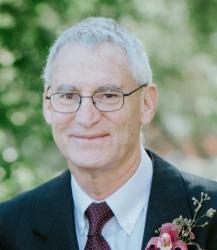Dennis Evanosky and Eric J. Kos created a marvelous coffee table book titled Lost Ballparks: A Celebration of Baseball’s Legendary Fields. The book features stunning photographs of 58 no-longer-standing ballparks. The stories recounted here are from their book.
Kingdome, Seattle, imploded 2000
After one year, Seattle Pilots expanded to Milwaukee in 1970 and became the Brewers. The Pilots had played in Sick’s Stadium, but the city wanted a stadium for baseball and football, as it had the prospect of attracting a football expansion team. From its completion in 1976 until its implosion in 2000, the Kingdome was home to the NFL Seahawks and Mariners. The 1979 MLB All-Star game was held there.

Photo courtesy HistoryLink.org
It was built as a football stadium that could be converted to baseball. Seattle teams have a reputation for having loud fans, and the cavernous Kingdome served them perfectly. With 11 men on the football field, the fans became known as the 12th Man and the Kingdome as the loudest stadium in football. The jersey number 12 was retired in the fans’ honor during the 1984 season.
As time wore on, the stadium’s deficiencies began to emerge. Both the Seahawks and Mariners wanted their own stadium. Ceiling tiles collapsed onto the seating area during a Mariners game, and lobbying began for a new venue. Safeco Field (now T-Mobile Park) was built a block away for the Mariners, complete with a retractable roof, and was ready for play in July 1999.
When it imploded in 2000, the 250-foot-high concrete shell of the Kingdome collapsed in 16.8 seconds.
Yankee Stadium, New York, demolished 2008
In 1913, the Yankees shared the Polo Grounds with the New York Giants. The Yankees’ acquisition of Babe Ruth early in 1920 resulted in bigger crowds than the Giants, who asked them to leave.

Yankee Stadium that was (photo, Reddit)
The owners decided on a 10-acre former lumberyard in the Bronx. It was built in just 284 days. Ironically, the Polo Grounds across the Harlem River was within sight. The gentle curving latticework that ran around the grandstand’s roof was known as the Frieze and was commissioned by the owners to give the stadium an air of dignity.
Opening day was April 18, 1923, before a capacity crowd. Twenty-five thousand fans were turned away. The Yankees beat the Red Sox 4-1, with Babe Ruth christening the “House that Ruth Built” with a three-run homer into the right-field bleachers.
By the mid-1960s, the imposing triple-decked structure had been allowed to deteriorate. The stadium closed for renovation on September 30, 1973, and the Yankees played the next two seasons at the Mets’ Shea Stadium.
The Yankees beat the Minnesota Twins 11-4 in front of 52,613 fans in reopening the refurbished park on April 15, 1976. By the 1980s, owner George Steinbrenner was already discussing the need for a new ballpark. The site chosen was just across the street from the existing stadium. The groundbreaking ceremony occurred on August 19, 2006, and the new stadium opened on April 2, 2009. The new ballpark was closely modeled on the original, including the dimensions of the field of play.
The site of the old Yankee Stadium is now a public park complete with a baseball diamond overlooked by a giant Louisville Slugger baseball bat.
Candlestick Park, San Francisco, erased 2015
Although the Giants played two seasons in Seals Stadium, it was never intended to be their permanent home field. Part of the deal with the Giants moving west from New York was that the city would build the team a new stadium.

Candlestick, named after an indigenous bird? (photo, AP & ESPN)
The city bought 65 acres at Candlestick Point and settled on the name Candlestick Park on March 3, 1959, after a name-the-park contest. Architect John Bolles designed the park like a horseshoe, open in the outfield, which turned the stadium into a virtual wind tunnel. The place was so cold and windy that some fans returned their season tickets for refunds.
Candlestick was the first modern baseball stadium built entirely of reinforced concrete. It served well until the Loma Prieta Earthquake struck during Game 3 of the “Bay Bridge” World Series on October 17, 1989.
The outfield area was fully enclosed when the 49ers moved from Kezar Stadium to Candlestick Park in 1971. However, the enclosure did not tame the wind as it swirled around the stadium’s interior. The Giants played their last game at Candlestick on September 30, 1999, before moving to AT&T Park (now Oracle Park). The 49ers played at Candlestick until December 23, 2013. With no more tenants, the stadium would face the wrecking ball, but not before Paul McCartney played a concert there on August 14, 2014, some 48 years after he had sung at Candlestick as a Beatles member.
________________
This article first appeared in The Vacaville Reporter on April 25, 2020.














